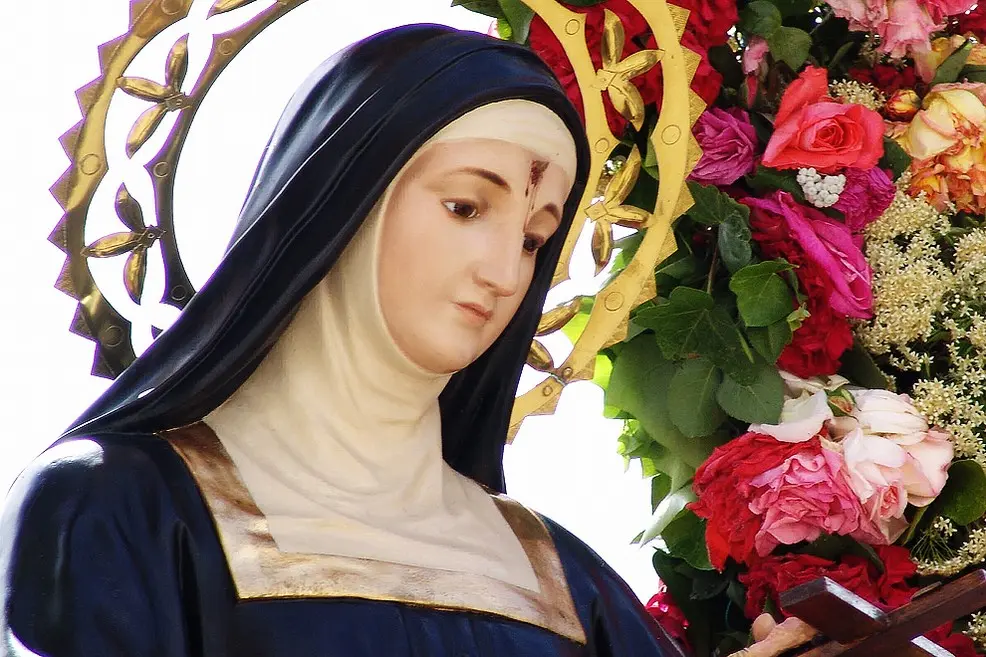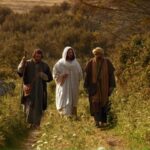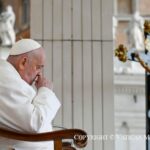Reading time: 7 minutes
Read the story of Santa Rita of Cascia
Summary
Widow and nun (1381-1447)
Birth
Rita was born in Roccaporena, a small fraction of the municipality of Cascia, on an unspecified day of a year that most scholars indicate in 1381.
La tradizione presenta i genitori, Antonio Lotti ed Amata Ferri, come una coppia unita, avanti negli anni, profondamente religiosa e con un solo cruccio: la mancanza di figli.
But one night an angel appeared to Amata in a dream to announce that she would become the mother of a girl who would be given the name of Margherita: the dream came true.
The miracle "of the white bees"
The miracle"of the white bees" potrebbe aiutarci a collocare l’evento nel periodo estivo o prossimo all’estate:
Rita infatti aveva pochi giorni quando esso accade e gli insetti, che le ronzavano vicino al volto senza pungerla, furono scacciati da un mietitore che stava lavorando in un campo di grano vicino. La mano dell’uomo, feritasi con la falce, fu guarita dalle api bianche nel momento che vi si posarono sopra.
Adolescence
adolescence di Margherita spent in an atmosphere of profound religiosity. Alongside her housekeeping, she surely was taught to read and write. In religious instruction her parents were probably helped by the friars and nuns of the Augustinian order present at Cascia.
Tradition particularly insists on the will of the adolescent to become a nun to dedicate her life to Christ. Ma il destino di Margherita era diverso: nel 1393 Paolo di Ferdinando Mancini la chiese in moglie e il padre, nonostante la vocazione religiosa della figlia, acconsentì.
Una decisione che appare strana se si presta fede alla tradizione che descrive il giovane pretendente come un violento, appartenente alla fazione Ghibellina (contraria al potere temporale del papa), implicato in quelle faide che i genitori della ragazza s’impegnavano a far cessare favorendo la pacificazione tra le famiglie o i gruppi che vi erano coinvolti. Il matrimonio fu probabilmente celebrato nel 1395-1396 quando la ragazza aveva sedici o diciassette anni. La vita di Rita al fianco di Paolo non dovette essere facile, ma l’amore che gli portava le diede la forza di sopportare la sua irascibilità.
Children
Nacquero due figli: Gian Giacomo e Paolo Maria, che ebbero tutto l’amore, la tenerezza e le cure dalla mamma. Rita riuscì con il suo tenero amore e tanta pazienza a trasformare il carattere del marito e a renderlo più docile tanto che Paolo abbandonò le vecchie compagnie, le lotte, gli agguati e la vita rissosa per dedicare il suo tempo alla famiglia.
But this change was not appreciated by his old companions who one night, between 1413-1414, set a deadly ambush for him: they waited for him near Collegiacone, along the road that leads from Cascia to Roccaporena, and there they stabbed him to death .
Rita fu molto afflitta per l’atrocità dell’avvenimento, cercò dunque rifugio e conforto nell’orazione con assidue e infuocate preghiere nel chiedere a Dio il perdono degli assassini di suo marito. Contemporaneamente intraprese un’azione per giungere alla pacificazione, a partire dai suoi figlioli, che sentivano, nonostante i suoi insegnamenti, come un dovere la vendetta per la morte del padre.
Ma, forse per le preghiere che lei stessa elevò al cielo affinché non si macchiassero di altro sangue, Gian Giacomo e Paolo Maria morirono di malattia circa un anno dopo il padre, tra il 1414-1415.
Ora Rita era veramente rimasta sola e nulla più la legava ad una vita fuori dal convento. Ma le monache agostiniane, che pure accoglievano tra loro delle vedove, non potevano accettare di ammettere nell’ordine una donna implicata, suo malgrado, in una faida.
Rita therefore undertook to pacify her husband's family with those of his killers and to put an end to the hatred that had deprived her of all her affections. A very difficult, almost impossible task, but which she was able to complete brilliantly in the end.
The rock"
Legend has it that, in one of the many nights of prayer on top of the "Rock”, che domina Roccaporena, Rita sarebbe stata portata in volo e depositata all’interno del convento dai suoi tre santi protettori: Giovanni Battista, Agostino e Nicola da Tolentino.
Le monache del convento di S. Maria Maddalena non poterono far altro che accoglierla nella comunità, riconoscendo nell’avvenimento una volontà divina. Finalmente la sua vita poteva essere dedicata interamente a Cristo e alla meditazione sulla sua passione e morte. Le testimonianze che sono giunte sulla vita di Rita, negli anni trascorsi tra le suore agostiniane, mostrano la figura di una donna che praticò, sopra tutte le altre, le virtù dell’umiltà e dell’obbedienza.
Il Venerdì Santo del 1432, Rita tornò in Convento profondamente turbata, dopo aver sentito un predicatore rievocare con ardore le sofferenze della morte di Gesù e rimase a pregare davanti al crocefisso in contemplazione. In uno slancio di amore chiese a Gesù di condividere, almeno in parte, le Sue sofferenze. Avvenne allora il prodigio: fu trafitta da una delle spine della corona di Gesù, che la colpì alla fronte. Fu uno spasimo senza fine : portò in fronte la piaga per i restanti 15 anni come sigillo di amore.
For Rita they were years of suffering without respite; her perseverance in her prayer led her to spend even 15 days in a row in her cell "senza parlare con nessuno se non con Dio”. She also wore the hair shirt which caused her suffering, moreover she subjected her body to many mortifications: she slept on the floor until she fell ill and she was forced to stay in bed in the last years of her life .
About 5 months after her passing, a winter day with freezing temperatures and a blanket of snow that covered everything, a relative visited her and, as she said goodbye, asked Rita if she wanted anything: she replied that she would like a rose of his garden. Back in Roccaporena, the relative went to the small garden and her amazement was great when she saw a beautiful rose in full bloom: she picked it and brought it to Rita. Thus Rita became the Saint of"Plug"and the Saint of"Rose".
The death
Era il 22 Maggio del 1447: Rita, prima di chiudere gli occhi per sempre, ebbe la visione di Gesù e della Vergine Maria che la invitavano in Paradise. One of his sisters saw his soul ascend to heaven accompanied by the Angels while the bells of St. Mary Magdalene and all the other churches began to ring by themselves; a very sweet perfume spread throughout the Monastery and from his room a bright light was seen shining as if the sun had entered it.
Il suo corpo, esposto nella chiesa del convento, fu meta di una folla commossa: tra di essa una parente di Roccaporena che, nell’abbracciare la salma, fu guarita da un’infermità al braccio ed il falegname Cecco Barbari da Cascia che vide risanate le sue mani.
The veneration
The veneration of Rita of Cascia by the faithful began immediately after her death and was characterized by the number and quality of prodigious events referred to her intercession, so much so that it became"the saint of the impossible".
Rita was beatified by Pope Urban VIII (Maffeo Barberini, 1623-1644)in 1627 and canonized by Pp Leo XIII (VincenzoGioacchino Pecci, 1878-1903)in 1900, 453 years after his death.
The cult for S. Rita is undoubtedly one of the most widespread in the world, collecting faithful in every corner of the earth. The body of St. Rita is kept inside a glass case, in a room of the convent annexed to the Basilica: from it one can observe, through a large grate, that the body itself appears to be mummified. Recent reconnaissance medical they stated that there are traces of an open bone sore (osteomyelitis) on the left forehead. The right foot has marks from a disease suffered in recent years, perhaps a sciatica, while his height was 157 cm.

source vagelodelgiorno.org





